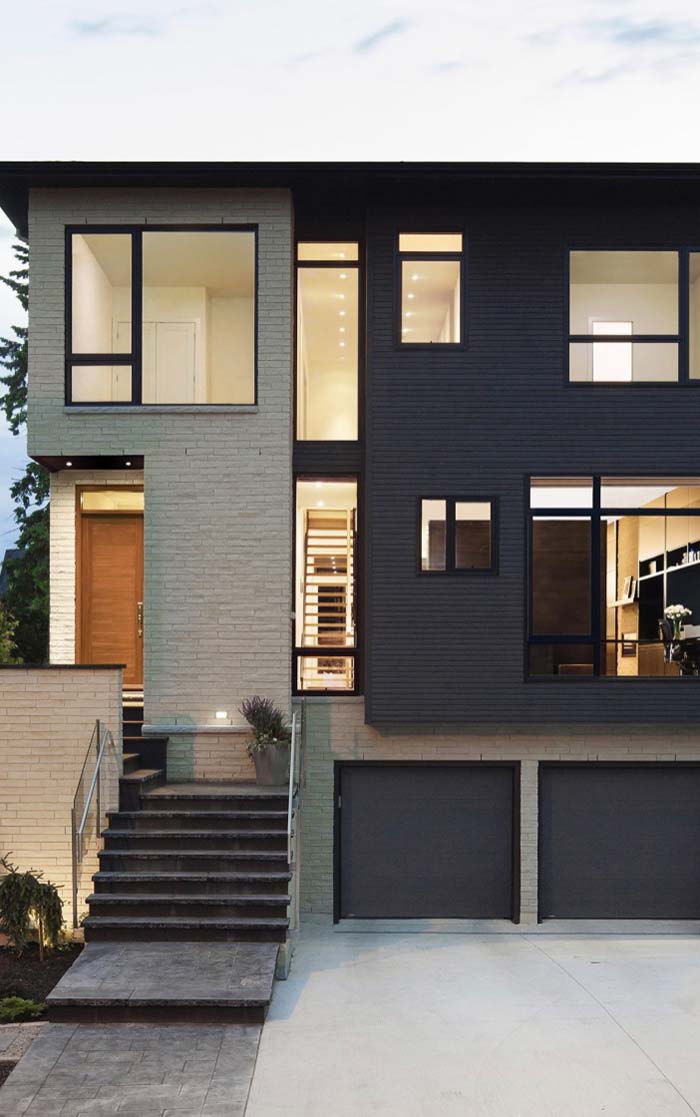#16077. Dual Facade: A Contrasting Play of Volumes and Textures in a Modern Home

This modern residential house exemplifies contrast-driven architecture, where the interplay of materials and colors creates a dynamic, memorable facade. The main composition is built on the interaction of two volumes — a light brick block on the left and a dark, almost graphite one on the right, establishing an effective visual balance.
The architectural solution features concise forms while maintaining expressive details. The facade demonstrates a clear rhythm of large panoramic windows with thin black frames, which not only provides abundant natural light to the interior spaces but also creates a graphic pattern on the building's external surfaces. The vertical glazing in the central part deserves special attention, serving as a light well and visually separating the volumes.
The entrance group is elegantly resolved: a wooden door in a warm tone becomes an accent element against the light background of brickwork. The staircase with metal railings adds constructive clarity to the composition. The lower level houses a garage with minimalist doors that organically fit into the overall concept.
The facade design follows the principle of tectonics — expressiveness is achieved through the building materials themselves and their textures without excessive decorative elements. This approach can be successfully used when designing your own home: contrasting textures (smooth and rough), playing with colors (light and dark), and thoughtful geometry of window openings can create an architecturally expressive solution even with a limited budget.